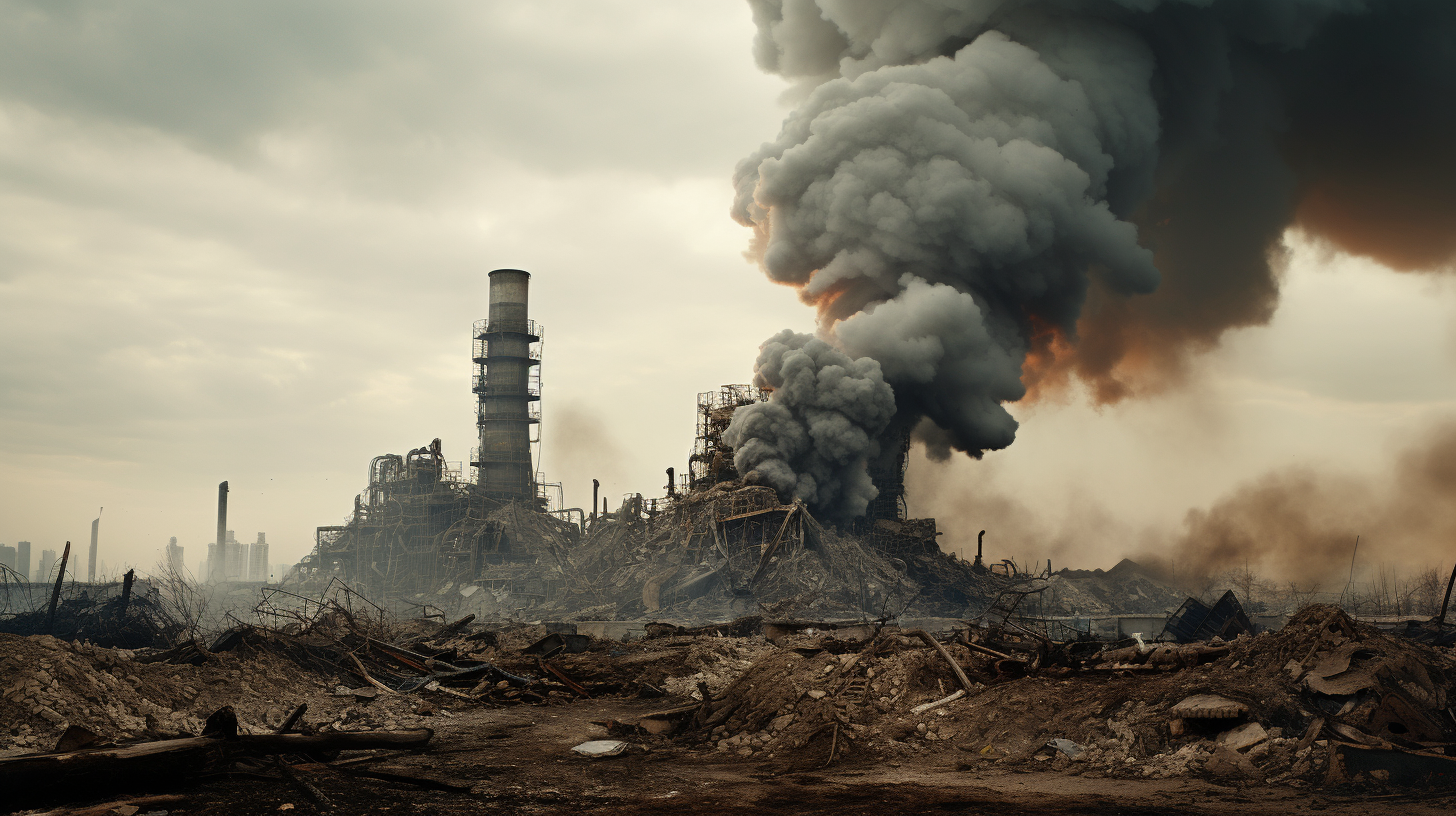Through the iron smog and the lifeless trees, the sky bleeds rust as humanity inhales the fumes of its own demise. The cities that once stood as beacons of progress are now tombstones of a civilization that could not heed the earth’s distress calls. We now live the final chapters of the environmental horror story:
Air pollution’s final stranglehold on the planet.
The air, thick as tar, plays the poison-laden requiem for apathetic souls. To breathe is to accept the toxins of our own creation; an invisible onslaught that claims lives with the stealth of a shadow in the night. Let’s not mince words – our atmosphere is an open grave.
Statistics paint a grim vista: billions choking on particulates, industries still belching carbons unabated, and endangered species gasping their last. Countries war over the last remnants of clean air, while children know the smog before they know of clear blue skies.
This is not the future. This is our dire present, the consequence of decades spent ignoring the clarion call for change. It seems that the dystopian world we once relegated to fiction has manifested itself into our world, our lives, our lungs.
It begs the question, what took the air from our grasp? Was it the silent killer, carbon monoxide, or perhaps the sinister suite of nitrogen oxides? Each poisonous breath whispers the sorry story of a world unwilling to break its addiction to fossil fuels, a world too entangled in the web of immediate gratification to untangle itself for its future breaths.
Respiratory ailments skyrocket, yet the wheels of industry grind unceasing. Asthmatic children stand as living testaments to this lugubrious legacy, their inhalers as much a part of them as the hopelessness in their eyes. The elderly find no respite, as their weathered lungs struggle against the clandestine clutch of the air’s toxicity.
We’ve known about the impact of greenhouse gases, the destruction of the ozone by CFCs, the disastrous effects of air pollution on climate and health. Yet here we are, as if each warning were a mere whisper in a hurricane, as if each piece of evidence were no more than a snowflake in the smog.
To discuss solutions seems almost quaint, an anachronism from an era when hope had not yet been smothered by the thick black air. But even in this, the twilight of our environmental consciousness, radical ideas surface, gasping for breath. Innovations born from desperation; whether they are too late, remains to be seen.
In the remnants of the forests, in the dust-choked streets of our cities, in the silenced voices of species we’ll never hear again, the verdict of our indifference echoes. This, our Last Breath, is not merely a consequence, but a choice. A choice made with every turned blind eye, with every dismissed study, with every denied consequence of our actions.
As our days grow dim, as our children inherit the whirlwinds of our recklessness, we must ask ourselves – was it worth it? When the very air we breathe becomes the enemy, what then? What words of comfort can we offer to the generations that follow, when we, ourselves, are haunted by the ghosts of forests lost, the silhouettes of extinct creatures?
The Last Breath may be upon us, but to acknowledge this is to confront the reality we have crafted. It is to stare into the smog and find our own reflections looking back, warped and distorted by the very air that sustains us. To act is now a revolutionary cry, one that breaks the silence of resignation and sparks the fire of rebellion against our self-imposed doom.
For in the end, the air we breathe is but a mirror of our collective soul; and as it darkens, we are left with the ultimate question – how will we answer?
